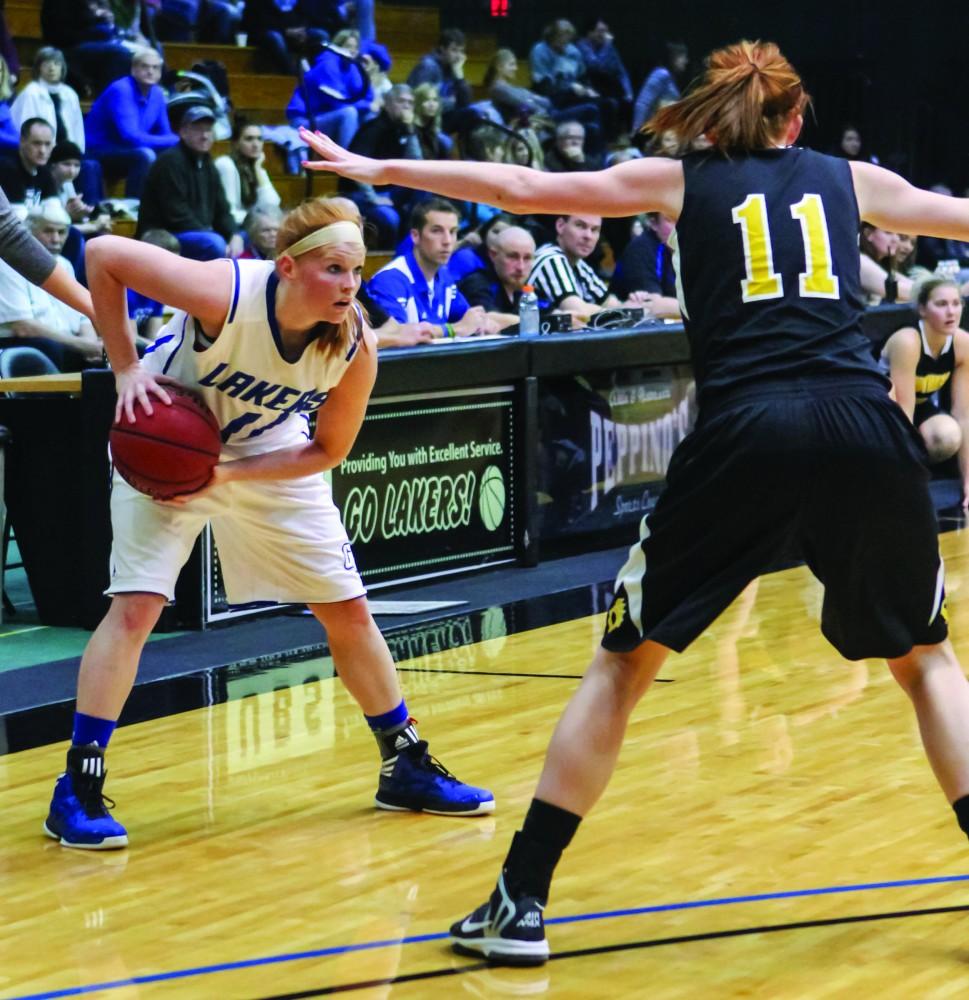GVSU women’s basketball team deserves better

GVL / Eric Coulter Dani Crandall (44) takes the ball into the paint.
Jan 17, 2013
With 2:23 left in the game against Northern Michigan University, sophomore Kristers Zeidaks excites the 904 people in attendance when he catches a pass from classmate Ryan Majerle and slams down an alley-oop dunk for the Grand Valley State University men’s basketball team.
Less than 30 minutes later, only 207 people will stay to watch as the GVSU women’s basketball team takes the court to face Northern Michigan, and even less will be in attendance to watch the conclusion.
It’s been a common trend at GVSU and at other campuses within the GLIAC, a packed gym for the men’s game, but only a quarter of those people staying to watch the women.
I’m not oblivious. I realize why most of the people may leave early. Students have to study, hangout with their friends, or they simply don’t want to sit in the Fieldhouse for four hours.
However, if the men were the second game, you know they would stay. This leads to one of the biggest misconceptions with women’s basketball, which is that it can’t be as exciting or watchable as the men’s game.
Sure, you’re not going to see anyone slam down a one-handed tomahawk dunk like Zeidaks, but there is still much to enjoy from the women’s game.
Senior guard Briauna Taylor is one of the most talented players in the GLIAC, and has an offensive repertoire as advanced as any other player in the conference, man or woman. Sophomore Kat LaPrairie is currently second in the GLIAC in three-point percentage at 47.2 percent and senior Alex Stelfox just joined the 1,000-point club and did it in Allendale, but few remained in attendance to see her reach this historic milestone.
In 2010, the Office for Civil Rights filed a complaint against the GLIAC stating that scheduling the woman’s games made them appear only as “warm-up” contests for the men’s games. The complaint came from a special interest group that was located in Grand Rapids, Michigan, where the GLIAC is stationed.
So now we have a rotation, where the men will play first, followed by the women, and have them switch after each year.
In the 2009-10 season, the last season before the switch was announced and made, the women were first and the average attendance at GLIAC games was 563 fans per contest. In the 2012-13 season, the GVSU women have averaged 239 fans per game in Allendale, while the men average 826 spectators at home.
I understand the premise of the idea and I can respect the special interest groups’ feelings. I understand that on paper, it may seem like a more “fair” way to split the primetime game slots after each year.
However, I don’t think the special interest group understands how it can be embarrassing to watch hundreds of people leave as you take the court.
I don’t know who the exact members are, or their athletic backgrounds, but my question to them would be, “Have you watched and saw the majority of the crowd leave as the women took the court?” and “What’s worse? Seeing most of your fellow students leave before the start of your game, or gradually file in as the game went on?”
At least with the men playing second, a majority of people would at least catch the second half of the women’s game, or the final minutes.
I’ve talked to members of the women’s basketball team and they all agreed. They’d rather play in the first game. The GLIAC needs to let the women’s players and coaches decide what’s fair, and not leave it in the hands of the people who aren’t even taking part in the games, or don’t have to watch the hundreds of people turn their backs on them and leave toward the exits.






















